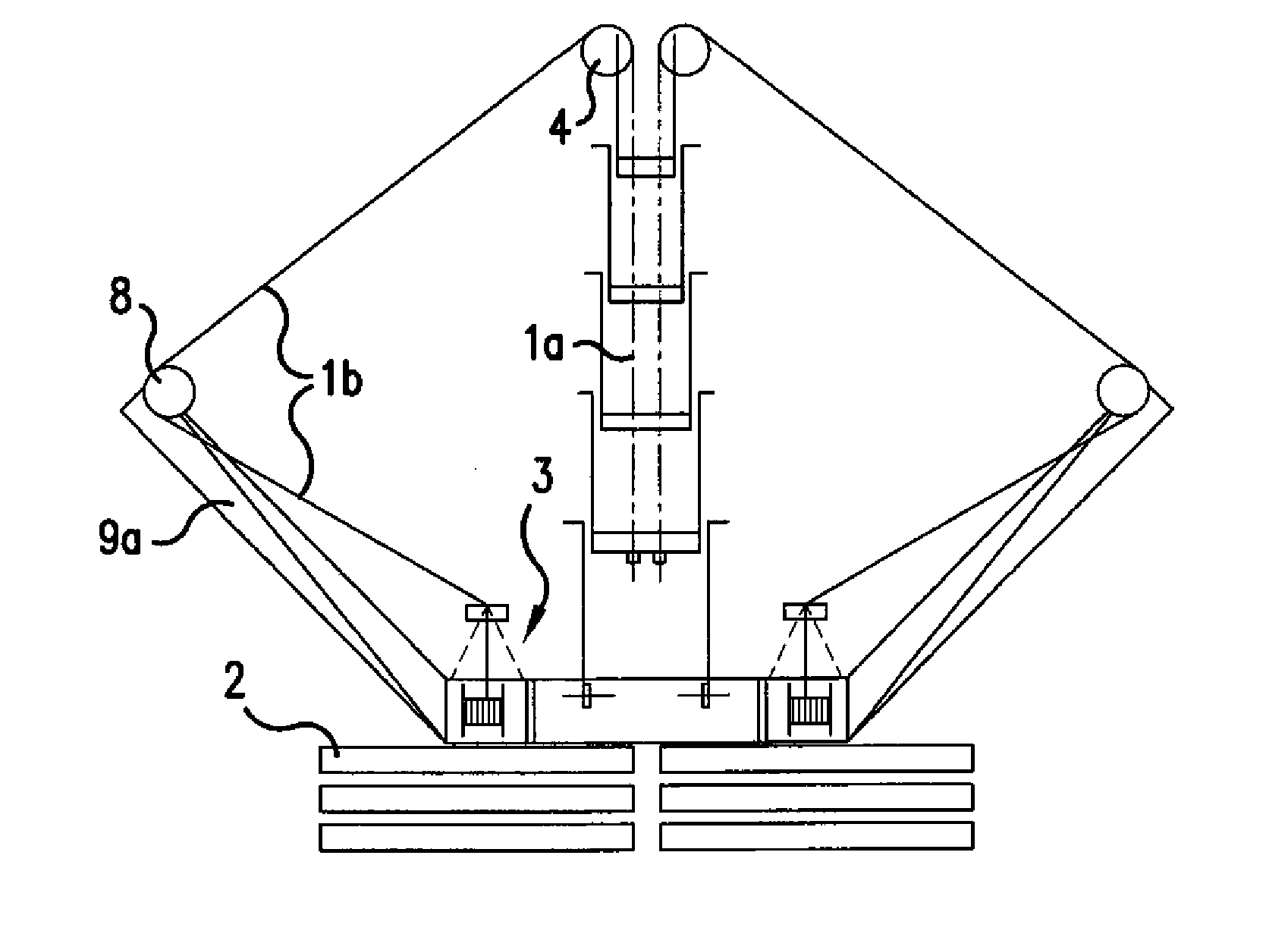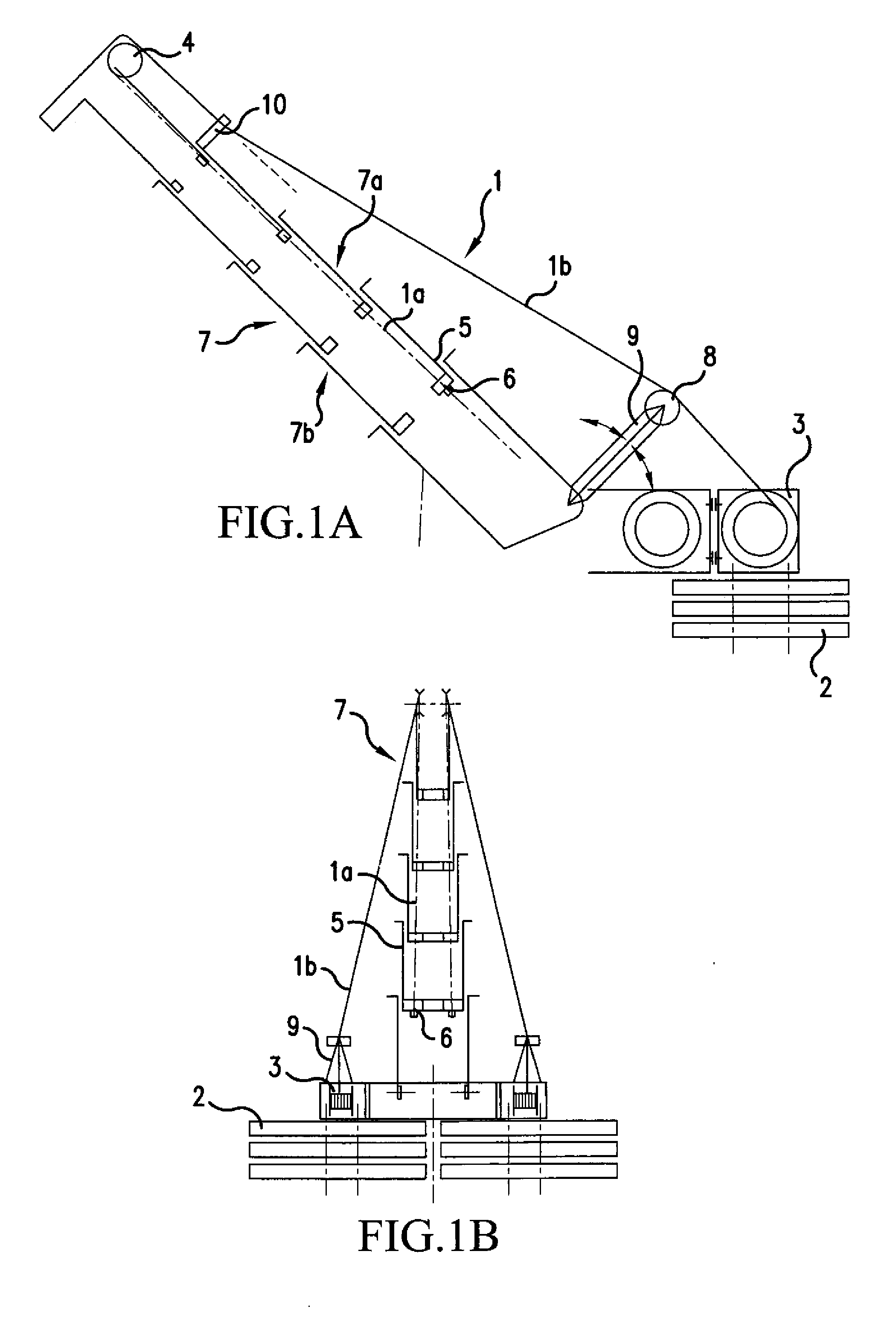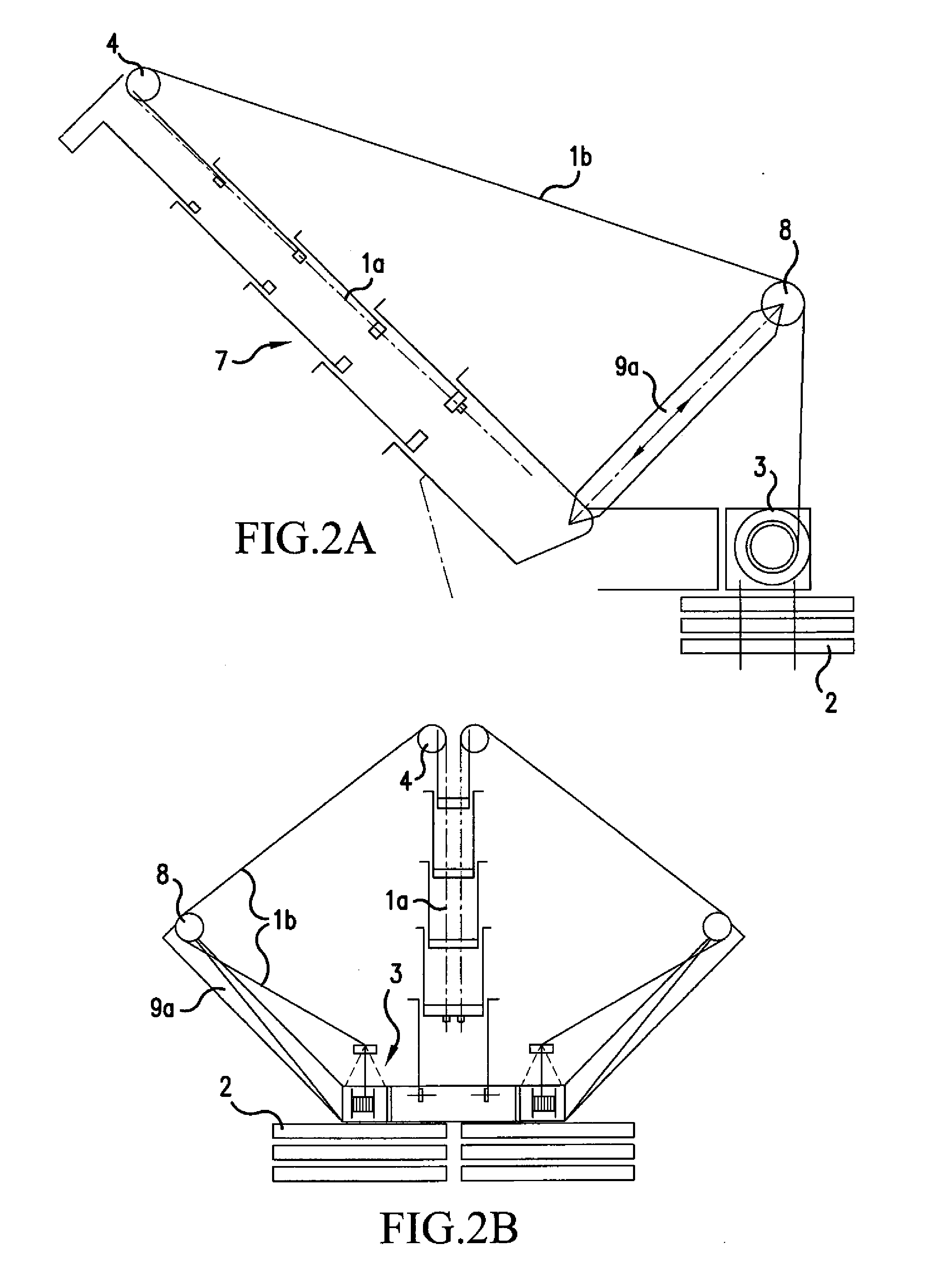Tensioning System for a Mobile Telescopic Crane
a technology of telescopic cranes and telescopic beams, which is applied in the field of telescopic beams, can solve the problems of affecting the stability of other panel-like areas, affecting the performance of the crane, and limiting the performance capability of the telescopic beam, so as to avoid dynamic impairment, reduce weight, and improve the effect of stability
- Summary
- Abstract
- Description
- Claims
- Application Information
AI Technical Summary
Benefits of technology
Problems solved by technology
Method used
Image
Examples
Embodiment Construction
[0032] In the figures, identical reference numerals indicate identical or functionally identical structural unit. FIGS. 1A and 1B show a lateral and a rear view of a telescopic mast for a mobile crane, tensioned on the upper run in accordance with the invention. The telescopic mast 7 and its bracing and biasing system comprising cable winches 3 and counterweights 2 is shown. The mast 7 consists of a number of telescopic portions, of which only the first extending telescopic portion is separately indicated by the reference numeral 5. The lower run of the mast bears the reference numeral 7b and the upper run, which in this case is biased, has the reference numeral 7a.
[0033] The telescopic mast is tensioned towards both sides of the luffing plane, the components in FIG. 1B are only provided with reference numerals on the left-hand side. The tensioning system functions as follows:
[0034] Starting from the cable winch 3, the tensioning cable 1 runs as its outer portion 1b firstly over a...
PUM
 Login to View More
Login to View More Abstract
Description
Claims
Application Information
 Login to View More
Login to View More - R&D
- Intellectual Property
- Life Sciences
- Materials
- Tech Scout
- Unparalleled Data Quality
- Higher Quality Content
- 60% Fewer Hallucinations
Browse by: Latest US Patents, China's latest patents, Technical Efficacy Thesaurus, Application Domain, Technology Topic, Popular Technical Reports.
© 2025 PatSnap. All rights reserved.Legal|Privacy policy|Modern Slavery Act Transparency Statement|Sitemap|About US| Contact US: help@patsnap.com



